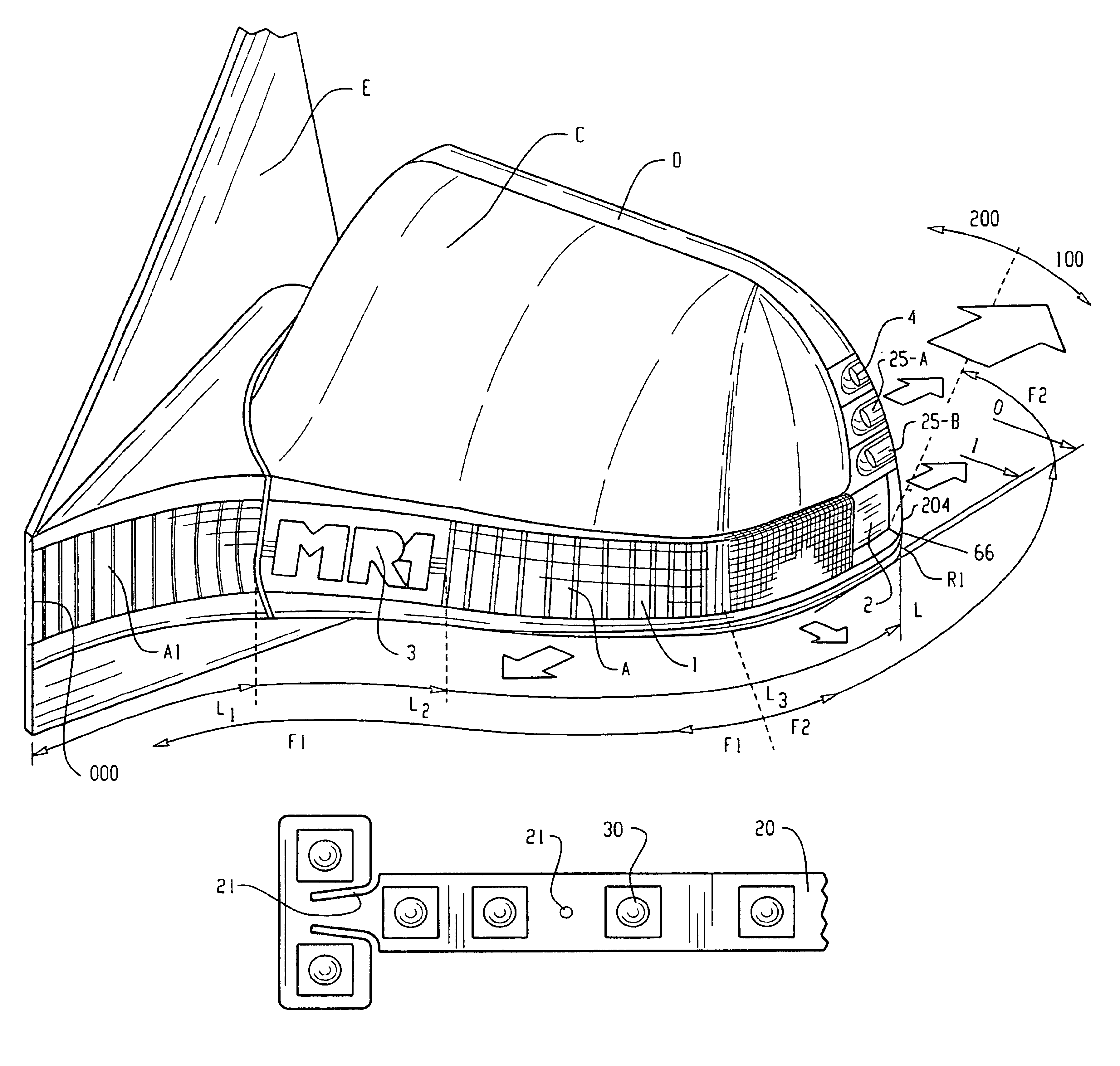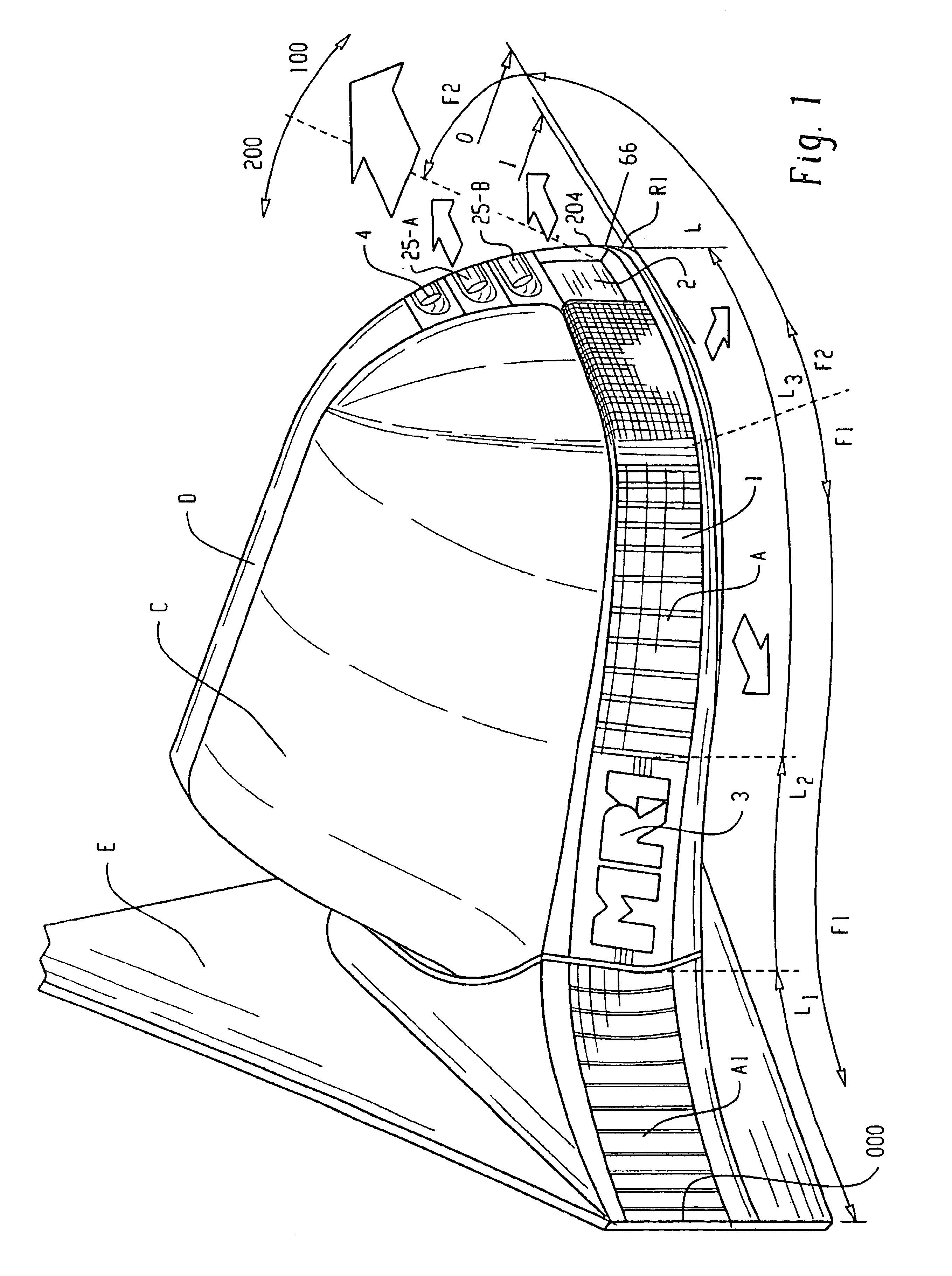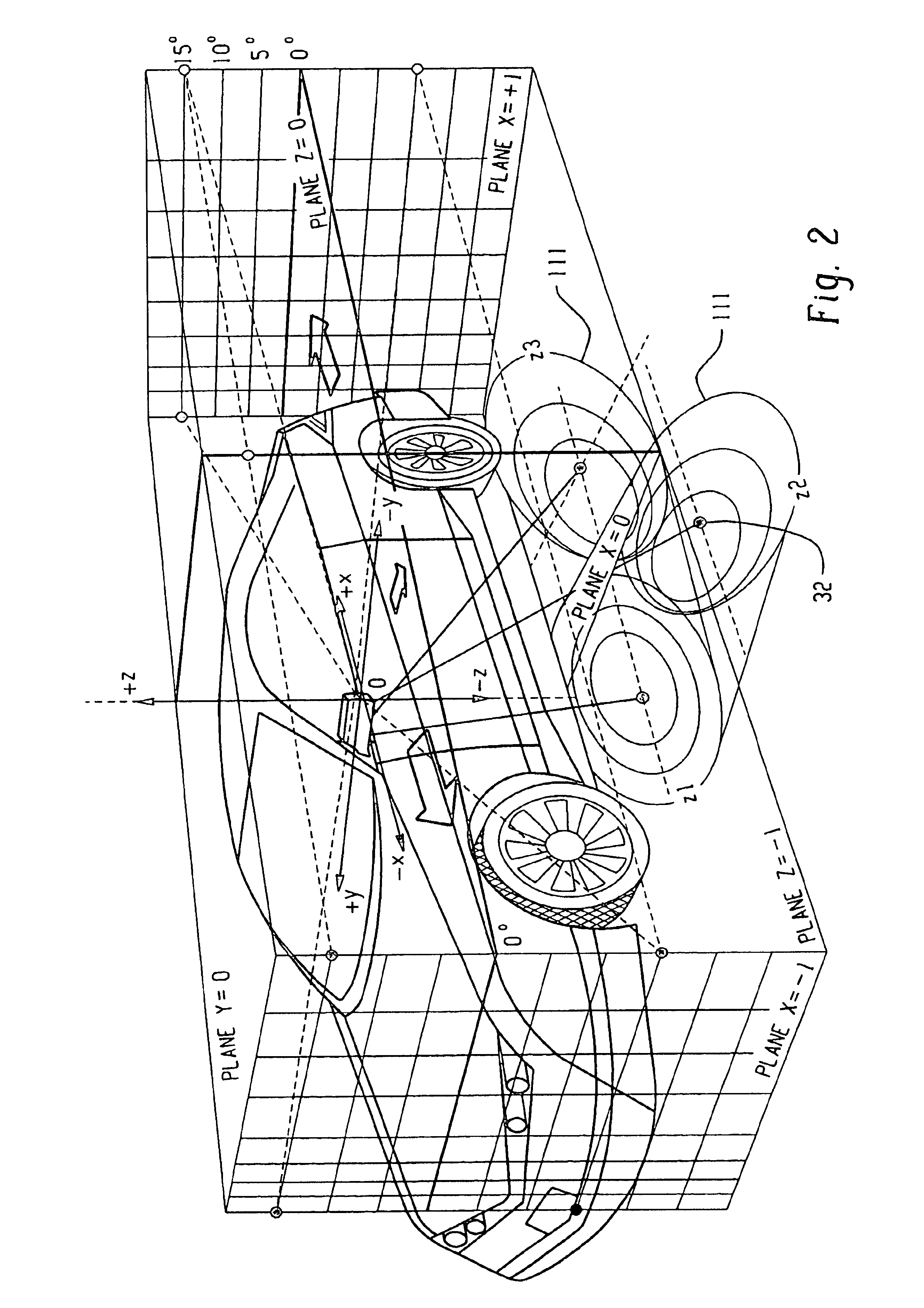Rear-view mirror with multiple interchangeable signals for vehicles with two, three, four or more wheels
a rear-view mirror and multiple interchangeable technology, applied in the field of new side mirrors, can solve the problems of limiting the visibility of the mirror, the concept of inapplicability, and the wide width of the panel separating the signal from the driver
- Summary
- Abstract
- Description
- Claims
- Application Information
AI Technical Summary
Problems solved by technology
Method used
Image
Examples
embodiment
[0162]Its construction and assembly are simple. The mirror modules are interchangeable and can be combined, and the signals do not alter the outer appearance, whereas, the inside contains options for the source, light output, non-visible signals and sensors. There are three basic stages in the construction of the new modules (A), (B) and (A+B).
[0163]1. The structure composed of outer surfaces (1), internal housing (10) and the interconnections, fixing and shape features and access for changing parts (17), (39), (8), (9), (600), (P1), (DC), (50). See FIGS. 39, 40 and 42.
[0164]2. The composition of the circuit / source, components, flexible base, mixed circuit, LEDS, OLES, bulbs, sensors, photodiodes, LEDs, IR, operation circuits (20), (30), (32), (25), (310), (95). See FIGS. 32 to 38.
[0165]3. The optical variants, reflection elements, light conductors, and intermediate optics (6), (7), (12), (13), (150), (155).
[0166]Housing (D) or chassis-housing (D1), glass (50), support (E), cover (C...
PUM
 Login to View More
Login to View More Abstract
Description
Claims
Application Information
 Login to View More
Login to View More - R&D
- Intellectual Property
- Life Sciences
- Materials
- Tech Scout
- Unparalleled Data Quality
- Higher Quality Content
- 60% Fewer Hallucinations
Browse by: Latest US Patents, China's latest patents, Technical Efficacy Thesaurus, Application Domain, Technology Topic, Popular Technical Reports.
© 2025 PatSnap. All rights reserved.Legal|Privacy policy|Modern Slavery Act Transparency Statement|Sitemap|About US| Contact US: help@patsnap.com



